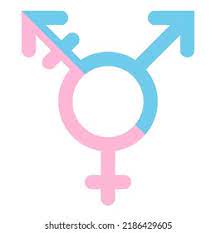Navigating the world of gender affirming hormone therapy (GAHT) can be both exciting and daunting. For many trans and non-binary individuals, GAHT is a vital step in aligning their physical selves with their gender identity. As you explore your options, it’s important to understand what hormone therapy is, the benefits it offers, and how to find the right care in your community. This article will guide you through the essentials of GAHT and help set you on the path to a more authentic self.
What is Gender Affirming Hormone Therapy Anyway?
Gender Affirming Hormone Therapy is a medical treatment that involves the administration of hormones to help individuals transition to their desired gender. For trans women, this typically means taking estrogen and possibly anti-androgens to suppress testosterone. Trans men and non-binary folks may take testosterone to promote the development of male secondary sexual characteristics. GAHT can significantly impact physical appearance, emotional well-being, and overall quality of life.Clitoris Growth On TestosteroneMtf Face Changes
The process of hormone therapy is tailored to each individual’s needs and goals, allowing for a customized approach to transitioning. It’s important to note that hormone therapy is just one aspect of a broader transition, which may also include social, legal, and surgical components. The key aim of GAHT is to help individuals feel more comfortable in their bodies, aligning their physical characteristics with their gender identity.
Benefits of Hormone Therapy for Trans and Non-Binary Folks
Hormone therapy can lead to a range of positive changes, both physically and emotionally. Many individuals report significant improvements in mental health, including reduced anxiety and depression, as their bodies begin to reflect their gender identity. These mental health benefits often stem from a greater sense of self-acceptance and belonging, making it easier to navigate social situations and relationships.
Physically, hormone therapy can result in changes such as breast development for trans women, voice deepening for trans men, and the redistribution of fat and muscle. These changes can enhance one’s confidence and improve body image, leading to an overall increase in well-being. However, it’s essential to remember that everyone’s experience is unique, and changes may occur at different rates and intensities.
Finding a Clinic: Where to Start Your Journey
Embarking on your GAHT journey starts with finding a healthcare provider or clinic that specializes in gender-affirming care. A good place to begin is by searching online for local clinics that focus on LGBTQ+ health. Many cities have specific organizations that provide resources for trans and non-binary individuals, including directories of healthcare providers known for their sensitivity and expertise in gender-affirming care.
Don’t hesitate to reach out to local LGBTQ+ community centers or support groups for recommendations. Personal experiences can guide you towards compassionate and knowledgeable healthcare professionals. Many larger hospitals also have gender clinics, which often include mental health professionals, endocrinologists, and primary care doctors who can provide comprehensive care.
Key Questions to Ask Your Healthcare Provider
Before starting hormone therapy, it’s crucial to have a clear and open dialogue with your healthcare provider. Start by asking about their experience with GAHT and their approach to treatment. You might inquire about the specific hormones they recommend, the expected timeline for changes, and any potential risks or side effects associated with the therapy.
Additionally, it’s important to discuss the process involved in monitoring your hormone levels and overall health throughout your treatment. Ask about follow-up appointments, necessary blood tests, and how often these will occur. A solid understanding of these aspects can alleviate anxiety and help you feel more secure in your decision to pursue GAHT.
What to Expect During Your First Appointment
Your first appointment for gender-affirming hormone therapy will likely feel both exciting and nerve-wracking. You can expect a comprehensive intake process where your healthcare provider will ask about your medical history, current health, and your goals for hormone therapy. They’ll likely also discuss the emotional and physical aspects of transition, ensuring you are informed and prepared for what lies ahead.
During this appointment, you may undergo some preliminary tests, such as blood work, to establish a baseline for your hormone levels. This initial assessment will help your doctor tailor a treatment plan that suits your individual needs. Moreover, this is a great opportunity to discuss any fears or concerns you may have about the process, as your provider can offer reassurance and valuable information.
Understanding the Different Types of Hormones
When it comes to gender affirming hormone therapy, there are primarily two types of hormones involved: estrogen and testosterone. For those identifying as female or non-binary wishing to feminize their bodies, estrogen is the key hormone used, often accompanied by anti-androgens that help block testosterone’s effects. The forms of estrogen can vary, including pills, patches, or injections, each with its own set of benefits and considerations.
For individuals assigned female at birth who wish to masculinize, testosterone is the hormone used to promote male secondary sexual characteristics, such as increased body hair, voice changes, and muscle growth. Just like estrogen, testosterone therapy can be administered in multiple ways—such as injections, patches, or gels. Understanding the different types of hormones and their methods of delivery is crucial as you consider what works best for you.
Managing Side Effects: What You Should Know
As with any medical treatment, hormone therapy can come with potential side effects. Common side effects of estrogen therapy might include mood swings, weight gain, or changes in libido. For testosterone therapy, individuals may experience acne, increased aggression, or changes in menstrual patterns. It’s important to remember that not everyone will experience these side effects, and many are manageable with the right support and care.
Regular follow-ups with your healthcare provider can help monitor and address any side effects you may encounter. Keeping an open line of communication about what you’re experiencing is essential for fine-tuning your treatment plan. If side effects become troublesome, your healthcare provider can suggest strategies to alleviate them or adjust your hormone dosage accordingly.
Support Resources for Your Hormone Therapy Journey
Embarking on hormone therapy can feel isolating at times, but you’re not alone on this journey. Many support networks and resources are available to assist you. Local LGBTQ+ organizations often host support groups where you can connect with others experiencing similar journeys, share experiences, and offer mutual encouragement.
Additionally, online forums and communities can serve as valuable spaces for information and support. Websites dedicated to transgender health can provide articles, videos, and forums where you can ask questions and learn from others’ experiences. Engaging with these support resources can help you feel more empowered and connected as you navigate your hormone therapy journey.
Starting gender affirming hormone therapy is a significant and personal decision. With the right information, support, and healthcare team, this journey can lead to a deeper sense of authenticity and well-being. Remember to take it one step at a time, ask questions, and reach out to resources that can provide guidance along the way. You deserve to feel at home in your body, and hormone therapy can be a powerful tool in achieving that goal.


